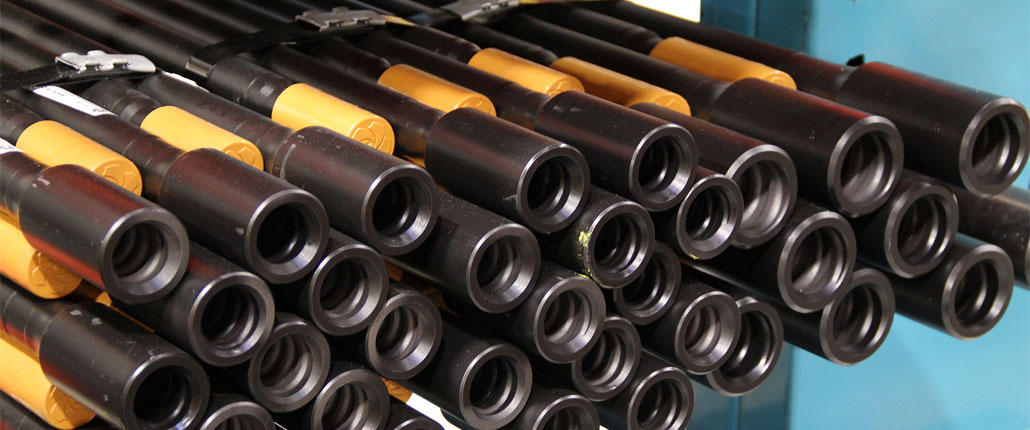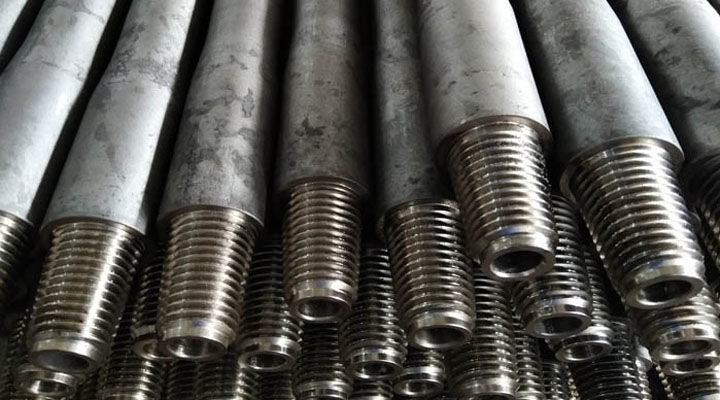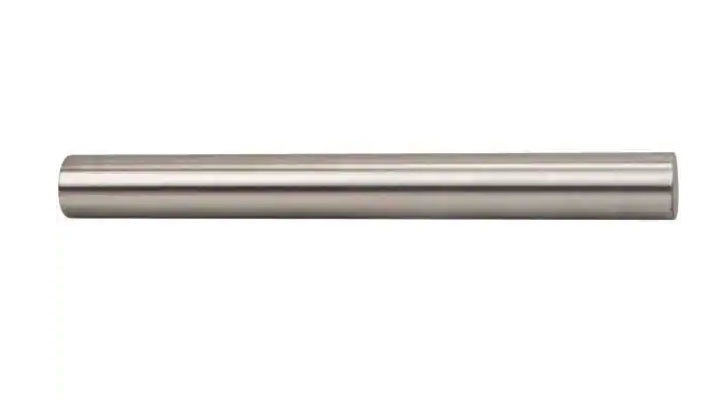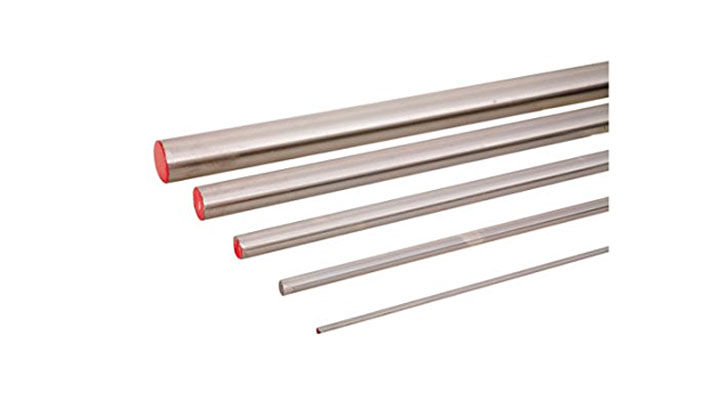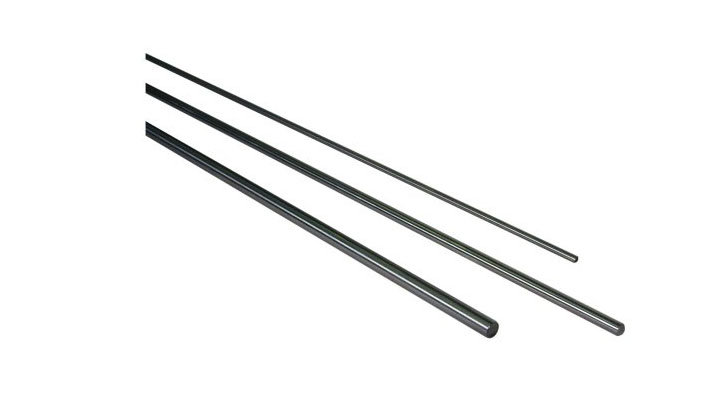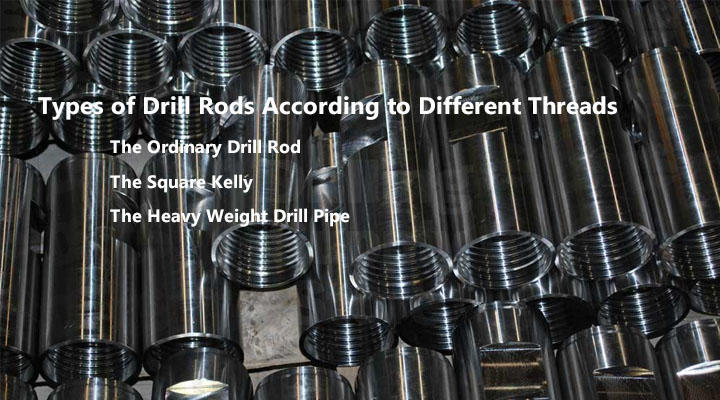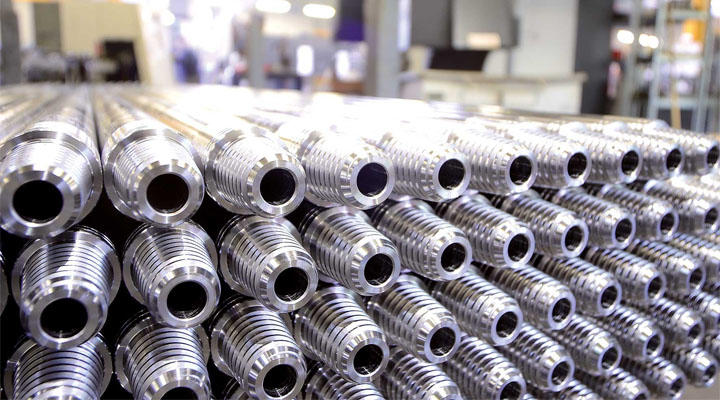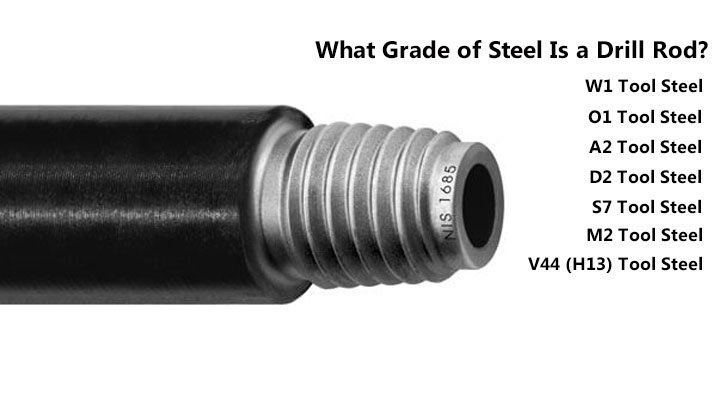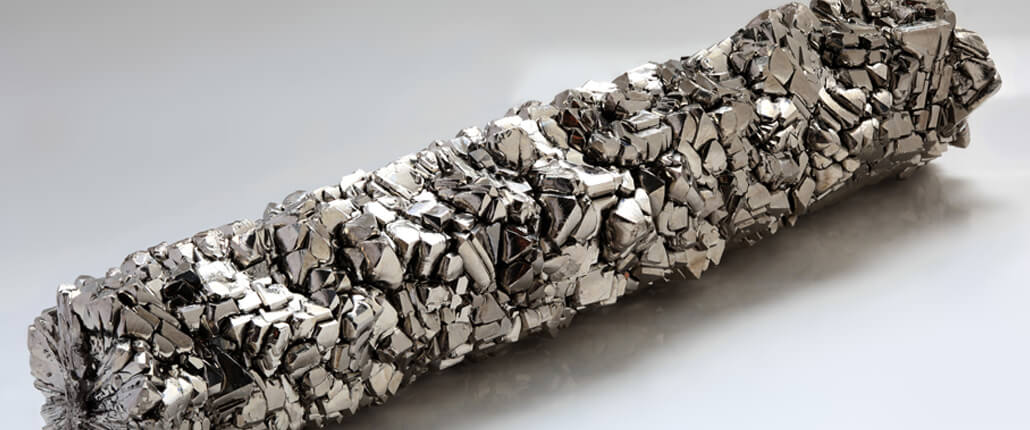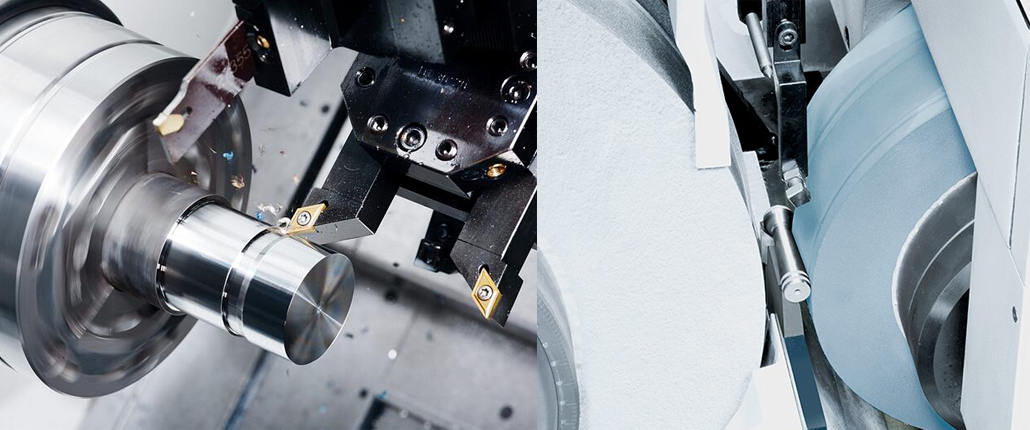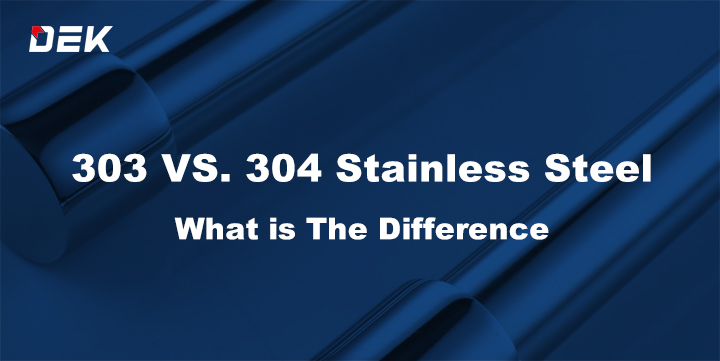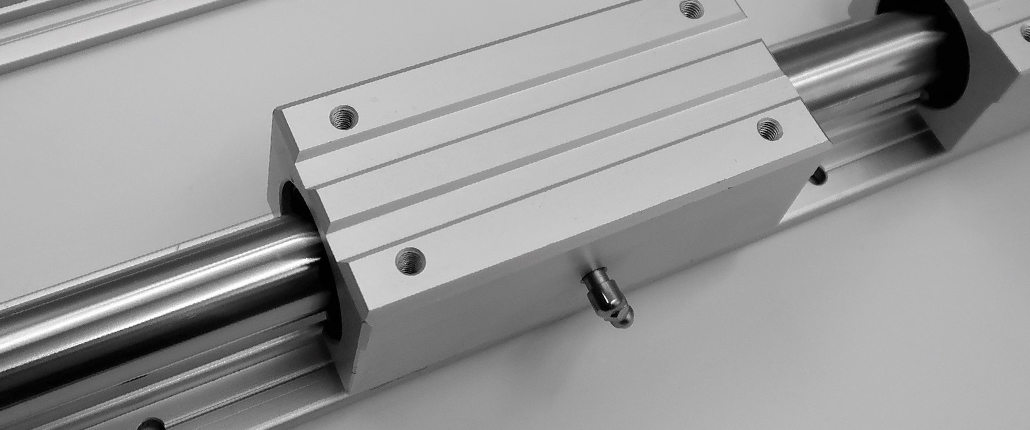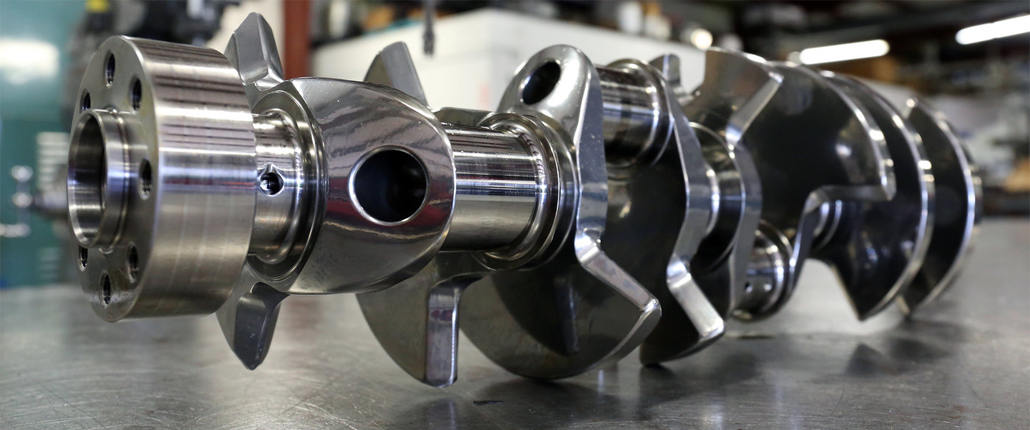A drill rod is a common term in the machinery and manufacturing industries. You can use drill rods to manufacture various tools such as cutters, hot-work tools, machine parts, punches, files, and more. But, do we know how to choose the right drill rod for our needs?
Drill rods differentiate in regards to toughness, durability, temperature resistance, and applications. With so many different material grades and types to choose from, how do we ensure we choose the correct drill rod?
That’s where we come in – this is the only guide you’ll ever need to drill rods, their uses, and applications. This guide is suitable for complete beginners as well as professionals in the industry.
Let’s see some of the most frequently asked questions on the subject of drill rods!
What Is a Drill Rod?
Simply put, a drill rod is a lengthier steel piece of easy-to-mold tool steel that you can use for machining to produce different tools and parts.
Typically, drill rods are round. However, there are some square ones, such as the square kellys you’ll see below. Drill rods are generally soft enough to be machined into their final form.
Drill rods need to have a clean and smooth surface. To manufacture them in this way, we usually use precision grinding.
What Is a Drill Rod Used For?
Drill rods have many different applications. Producers usually use drill rods for manufacturing drilling bits, shafts, dowel pins, reamers, punches, taps, hammers, files, cutting tools, hot-work tools, etc.
Different grades of drill rods are best suited for specific uses. For example:
- W1 is suitable for cold-work tools, hand-held tools, cutting tools, punches, dies, etc.;
- O1 grade is best for punches, dies, and gages;
- A2 and D2 can be suitable for hobs, rolls, knurls, coining dies, punches, dies, etc.;
- S7 gade is perfect for knock-out pins, drift pins, stamps, grippers, track tools, river sets, mandrels, circular pipe cutters, and more;
- H13 (or V44) is suitable for hot-work tools, plastic molds, die-casting tools, core pins, ejector pins, and more;
Types of Drill Rods According to the Manufacturing Process
According to the manufacturing process they go through, there are three different types of drill rods: air-hardening, water-hardening, and oil-hardening. Each of these drill rods has various uses and applications. Let’s explain something about each of these different types of manufacturing processes and drill rods.
Air-Hardening
We’re starting from the toughest category of tool steel – the air-hardened drill rod. Air-hardened steel has more alloy, and this is what makes it so hard and resistant. After heat treatment, you can leave air-hardening types of drill rods to harden in still air.
Air-hardening drill rods have superior machinability and wear resistance when compared to oil or water-hardening rods. Furthermore, air-hardening is safer than water or oil-hardening in regards to distortion and dimensional stability.
Oil-Hardening
Oil-hardening drill rods are second in line when it comes to their hardness and durability. Although oil-hardening rods have less alloy than air-hardening rods, they’re still rich enough to withstand welding. On top of that, oil-hardening steel is suitable for machining.
If you’re not sure what the term “oil-hardening” means, it implies heating the rod until it’s glowing red and then dipping it into a pool of warm oil. With this, the steel becomes hard and ready for machining or welding.
Water-Hardening
And finally, we have the water-hardening drill rods, which portray the lowest alloy content but are excellent for machining. However, they’re deficient in alloy content, which signifies that they’re not structurally suitable for welding purposes.
To harden a drill rod with water, we first heat the steel until it becomes glowing red, and then we plunge it into a pool of water to cool off. Once the metal is hard, it can be easily machined but not welded. You can usually use water-hardening drill rods for the manufacturing of files or hammers.
Types of Drill Rods According to Different Threads
We can classify drill rods into three different types according to different threads: ordinary drill rods, square kelly rods, and heavy-weight drill pipes.
The Ordinary Drill Rod
We can easily recognize the ordinary drill rod since it’s the central or basic part of the drill stem. At the top, the ordinary drill rod connects to the square kelly (explained below), and at the bottom, it’s attached to the drill collar.
In borehole digging, the function of the ordinary drill rod is to deepen the hole, transmit torque, and move the drill up and down.
The Square Kelly
As we mentioned above, the square kelly is at the upper-most part of the drill, where it transmits torque and bears some of the weight of the drill. The term square kelly came from the fact that these parts are usually in a square form.
The square kelly consists of:
- The driving part – usually square, but can be hexagonal;
- The upper joint – left-hand thread;
- The lower joint – right-hand thread;
The Heavy Weight Drill Pipe
We mentioned above that the base drill rod attaches to a drill collar at the bottom. Between these two parts, there’s the heavy-weight drill pipe. The heavy-weight drill pipe (or HWDP for short) is the transitional part between the ordinary drill rod and the drill collar at the bottom.
The role of the heavy-weight drill pipe is to provide support and stability to the drill string and increase its wear resistance.
What Are Drilling Rods Made Of?
You can make a drill rod of different grades and types of annealed tool steel. The term tool steel entails various carbon and alloy steel types suitable for tool manufacturing.
We produce drill rods out of tool steels due to their hardness properties and resistance to temperature shocks, deformation, and abrasion. Generally speaking, these tool steel materials are highly wear-resistant.
You can use many different tool steel grades to manufacture drill rods: W1, O1, A2, D2, S7, M2, and V44. Each of these grades has its distinctive features and properties that make it superior for a specific application. Depending on the type, some tool steels are stainless steel, while others are semi-stainless.
What Is the Hardness of a Drill Rod?
The hardness of a drill rod depends on the tool steel that we used to manufacture it. You can determine and communicate the hardness of a material with the help of two different scales: the Brinell Hardness and the Rockwell Hardness scale.
According to the Brinell Hardness scale, tool steels should have a hardness ranging from 207 to 341. According to the Rockwell measures, the same materials should be in the range between 96 and 110Rb.
The machinability of a drill rod is closely related to the hardness. Different grades of tool steel have varying machinability power.
Compared to 1.0% carbon steel, here’s the machining-friendliness of different grades of tool steel:
|
Grade of Tool Steel |
Machinability Percentage |
| W1 |
100% |
|
O1 |
95% |
|
A2 |
65% |
| D2 |
50% |
|
S7 |
95% |
| M2 |
65% |
|
H13 |
75% |
(Tool Steel Grades Machinability Table)
Manufacturing Processes of Drill Rods
In general, there are two main types of drill rod manufacturing: water-hardening and oil-hardening.
To create a drill rod, the tool steel first gets heated until it becomes a glowing red color. Once it becomes red, it has to be cooled so that it hardens and retains its shape. This cooling can be done either by dipping the drill rod in water, or in warm oil. Let’s see the differences between both of these processes.
Water-hardened drill rod manufacturing
Water-hardened drill rods are exactly how they sound – drill rods hardened by plunging them in water. First, the tool steel gets heated until it gets a glowing red color. Then, it’s plunged into a water pool to cool down and harden.
A water-hardened drill rod is poor in alloy content, which makes it ideal for machining, but not tough enough for welding. Water-hardened drill rods are best suited for those looking for cheap and highly-machinable parts and tools.
Oil-hardened drill rod manufacturing
An oil-hardening manufacturing process entails steel that has been heat treated, and is plunged into warm oil to cool off.
Oil-hardened drill rods are richer in alloy, so they’re suitable for machining as well as welding. In regards to their hardness, oil-hardened rods are much higher on the scale. Due to their toughness, they’re more durable and resistant to extreme temperatures.
What Is the Length of a Drill Rod?
The length of the average drill rod is either 3 feet (36″) or 12 feet (144″). Some drill rod manufacturers will agree to cut 12 feet rods into two, 6 feet rods that are easier to work with and manipulate.
In the metric system, a 36″ rod equals 91.44cm, and 144″ is 3.6 meters.
How Straight Is a Drill Rod?
When it comes to the straightness tolerance of a drill rod, we can see two different numbers, one in inches, one in millimeters.
For annealed tool steel that’s 36, 72, or 144 inches long, the tolerance is +0/+0.125″, and the straightness should be ±.005″ max T.I.R. per 12″.
The measurements in millimeters are as follows:
- A tolerance of -0.60/+2.60mm;
- Straightness of ±.13mm max T.I.R. per 300mm;
Can a Drill Rod Be Welded?
The short answer is yes – you can weld drill rods. However, consider that the heat treatment from the welding process will temper with the tool steel and harden it. With this, the material will become more challenging to work with and manipulate.
So, when welding drill rods, always do it with the best welding practices in mind to avoid resulting in a material that’s too hard to handle.
Furthermore, most oil-hardening and air-hardening drill rods are suitable for welding, while water-hardening steel isn’t. Have this in mind when preparing the manufacturing process.
What Grade of Steel Is a Drill Rod?
We can use several different tool steel grades for drill rod manufacturing: W1, O1, A2, D2, S7, M2, and V44. Let’s see what each of these is best for.
W1 Tool Steel
Type: Water-hardening
We decided to talk about W1 tool steel first due to how widely used and inexpensive these drill rods are. However, the low price comes with a decreased toughness of this material. W1 steel has less alloy content than steel that’s air- or oil-hardened. Less alloy means that this material is perfect for machining but not hard enough for welding.
With all this considered, we recommend W1 water-hardening drill rods for applications with no need for extra strength and hardness.
O1 Tool Steel
Type: Oil-hardening
O1 tool steel has a remarkable toughness when you consider its modest price. Manufacturers often use O1 drill rods as a superior replacement for W1 drill rods in applications that require more toughness and wear resistance.
With all their fantastic properties, these O1 drill rods have a great price vs. value ratio. The higher alloy content of oil-hardening steel makes it a much better alternative to water-hardening tool steel like W1.
A2 Tool Steel
Type: Air-hardening
A2 drill rods are air-hardening, which results in good machinability and welding features. The air-hardening types of tool steel gain their hardness by simply cooling in still air. Since we’re talking about a chromium alloy steel of superior quality, the A2 tool steel has deep hardening features, high compressive strength, and outstanding stability after hardening.
Compared to O1, A2 can serve as a more sophisticated replacement that provides more strength, wear-resistance, and structural stability.
D2 Tool Steel
Type: Air-hardening
D2 tool steel is a unique material with high carbon and chromium content. The levels of chromium and carbon are higher than in A2 steel, making it more durable and resistant to wear and tear.
It’s not surprising that D2 drill rods are usually among the most expensive ones you can find. Due to its high resistance and longevity, you can use D2 drill rods for drawing and forging lines.
S7 Tool Steel
Type: Air-hardening
The S7 drill rod has a lower carbon content than other steel types, making it incredibly shock resistant. That’s why S7 rods are also known as super shock drill rods.
When we treat it with heat, S7 obtains a high hardness level. We usually use S7 drill rods for parts that should resist extremely low and high-temperature shocks.
M2 Tool Steel
Type: Tungsten-Molybdenum, High-Speed
The M2 drill rod is the most widely-used grade for manufacturing cutting tools and other drill bits. As such, M2 it’s sort of like the gold standard for high-speed tool steel.
M2 displays excellent hardness and wear resistance. In the past, we often used T1 for high-speed applications. However, due to its superior features and properties, M2 has replaced T1 on a massive scale.
V44 (H13) Tool Steel
Type: Air-cooling
Viscount 44 is a fully pre-heated H13 tool steel. The pre-hardening process of V44 makes it highly well-suited for hot work dies. By using V44, we can decrease the danger of distortion or size changes during heat treatments.
The most common uses and applications of V44 include extrusion tools, forging dies, plastic molds, and many different hot-work tools.
What Is the Rockwell Hardness of a Drill Rod?
The Rockwell hardness is a scale based on the indentation hardness of different materials. Different values have varying letter/digit codes based on their level of hardness.
As we’ve mentioned before, we manufacture drill rods out of annealed tool steel, which has a Rockwell hardness ranging from 96Rb to 110Rb.
|
Type of Material |
Precision Diameter | Brinell Hardness | Rockwell Hardness |
| Tool Steel | 0.000″ – 0.124″ | 341 |
110Rb |
|
Tool Steel |
0.125″ – 0.249″ | 275 | 104Rb |
| Tool Steel | 0.250″ – 0.875″ | 241 |
101Rb |
|
Tool Steel |
0.876″ + | 207 |
96Rb |
(A Drill Rod Rockwell Hardness Table)
To Sum Up
Last but not least, we’d like to get back to the importance of drill rods to have smooth surface finishes that are free of any mistakes or imperfections. Furthermore, take care that the tool steel you use is of high quality. You can achieve that by collaborating with a quality machining manufacturer and communicating your requests.
All in all, we sincerely hope we’ve managed to explain to you what a drill rod is, how we produce one, and all its different uses. Choosing the right tool steel grade according to the application of the drill rod is something you have to practice. With this guide to drill rod manufacturing, you can make an informed decision.
